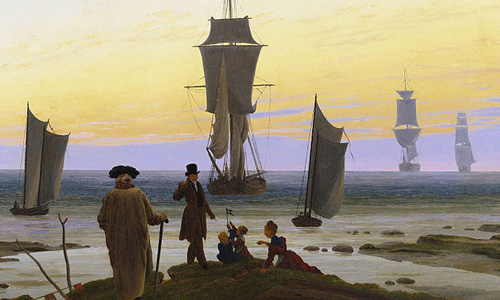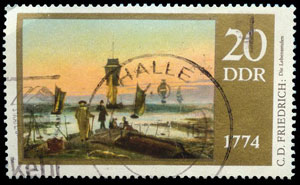Lebensstufen - what is happening?
Friedrich has placed a number of figures, rather like a family group in the centre of the painting. They are out for a stroll or picnic on the seashore perhaps - five people in all, of various ages. We have two small children, one perhaps a little older than the other; a young woman; a middle aged man and finally an elderly gentleman. The vessels out on the water are also five in number, consisting of two small boats that would not venture far from the shore, and three larger ocean-going ships. Their square rigging is presented head-on to us (the centre vessel in particular), suggestive of the Christian cross and redemptive symbolism.
Detail from the central part of the painting.
The children at play have a resonance in the two small in-shore boats, cavorting and sailing close to the protection of the shore. The ship in the centre, meanwhile, is majestic in appearance and could be anchored, suggesting the self-confidence of the young woman. She is the focus of the family unit. The two gentlemen, meanwhile, one clearly much older than the other, find their resonance in the two more-distant vessels. These are seen sailing out towards the horizon and to infinity. We are reminded that death is the inevitable outcome of life, therefore. But it is also represented here as a voyage, perhaps even one of discovery, sailing out towards an infinite space.
1974 German Postage Stamp of the Lebensstufen.



